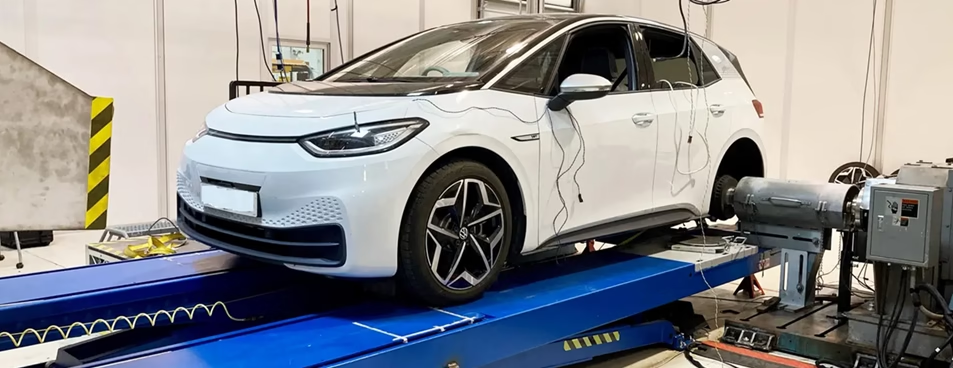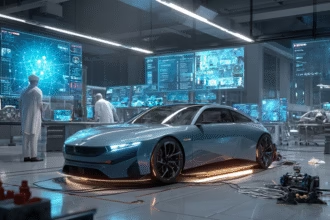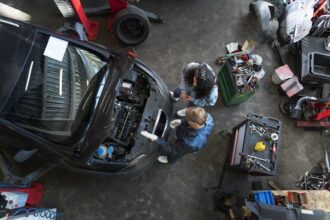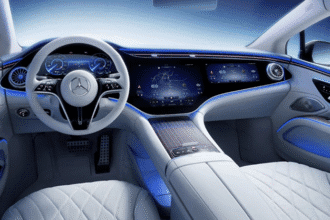India is rapidly building testing capacity for the electrification of mobility and its supporting electrical ecosystem. The Central Power Research Institute (CPRI) has inaugurated a regional testing laboratory at Shilapur near Nashik, with plans to add dedicated EV testing capabilities to serve the expanding western India EV manufacturing cluster.
This facility creates local access to certification and high voltage testing that previously required equipment to be sent to distant labs, thereby reducing delays and costs. The centre also demonstrates the government’s commitment to developing supportive infrastructure that can keep pace with the fast-growing EV sector. By hosting advanced equipment for electrical and electronic validation, the Nashik lab strengthens compliance with national and international standards and provides a strategic advantage to regional manufacturers.
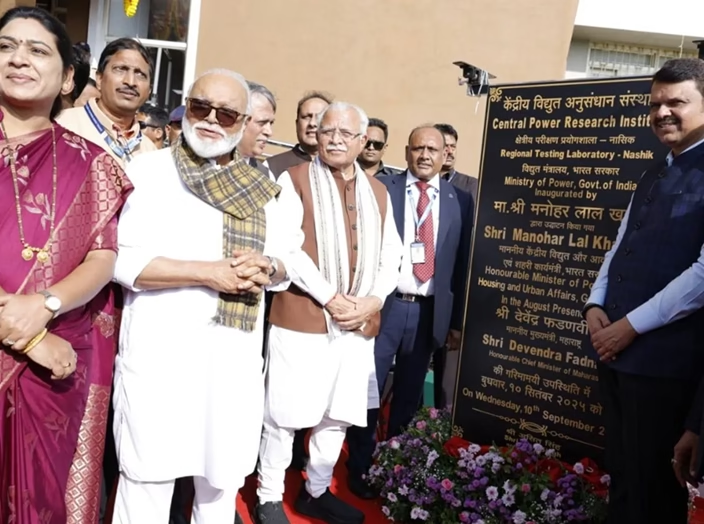
Table of Contents
Why testing infrastructure matters now
Electric vehicles and charging systems require rigorous electrical and automotive tests including insulation and dielectric strength, electromagnetic compatibility, thermal performance, battery safety, and interoperability of chargers. For example, battery pack suppliers must undergo repeated cycle life and thermal runaway tests, while charger manufacturers need interoperability checks to confirm seamless communication with vehicles.
High voltage equipment such as traction inverters demands partial discharge and insulation monitoring, which require specialized rigs. Without proximate testing capacity, smaller manufacturers face delays of weeks for sample transport and scheduling. By situating these capabilities in Nashik, component makers and startups can validate designs quickly, resolve compliance issues earlier, and accelerate entry into the EV supply chain.
The Nashik Regional Testing Laboratory
The Nashik regional testing laboratory represents a major step toward decentralizing EV and electrical equipment validation. Spread across 100 acres at Shilapur, the facility provides scope for long-term expansion into specialized areas as technology evolves. CPRI has invested between one hundred crore and two hundred crore rupees in the centre, underlining the scale of government commitment.
Inaugurated by Union Power Minister Manohar Lal Khattar and Maharashtra Chief Minister Devendra Fadnavis, the project has political and industrial significance. Local stakeholders, including the Nashik Industries and Manufacturers Association, supported the initiative, with president Ashish Nahar highlighting demand for high voltage test capability up to 800 kilovolts.
The lab is also equipped for impulse voltage tests on transformers and switchgear, smart meter testing, and advanced power electronics validation, which are essential for integrating EV chargers into the grid.
EV specific testing: which tests matter and which standards apply
EV powertrains, battery packs, onboard and offboard chargers, and vehicle control electronics must all meet stringent validation. Dielectric strength testing ensures that insulation in traction inverters and battery modules can withstand surges, while thermal cycling and abuse tests replicate extreme scenarios such as rapid charging in high temperatures or exposure to mechanical shock.
Electromagnetic compatibility testing prevents interference with vehicle control units or grid equipment. Interoperability testing of charging stations ensures conformity with Bharat DC, CCS, and CHAdeMO protocols. Together, these test categories ensure performance, safety, and grid stability, creating consumer trust and enabling India’s EV ecosystem to expand sustainably.
Regulatory and technical standards
Automotive Industry Standards such as AIS 038, covering traction battery safety, and AIS 138, defining charger requirements, form the backbone of India’s EV certification process. AIS 038 mandates tests for vibration resistance, overcharge protection, and thermal management in lithium-ion batteries, while AIS 138 requires interoperability across multiple vehicle platforms.
Agencies such as the Automotive Research Association of India (ARAI) and International Centre for Automotive Technology (ICAT) oversee implementation and issue type approval certificates that are mandatory for market entry. Electrical equipment testing follows Indian Standards harmonised with IEC frameworks, and CPRI applies these using advanced rigs for dielectric strength, impulse withstand, and thermal stability. Harmonisation with global standards enables Indian products to compete internationally while ensuring imported technologies meet local safety and grid requirements.
Who tests and certifies EVs and chargers in India
A network of specialized laboratories and agencies carry out homologation and certification:
- Automotive Research Association of India (ARAI): Conducts EV testing and provides type approval under the Central Motor Vehicle Rules.
- International Centre for Automotive Technology (ICAT): Another central agency handling homologation and EV testing.
- Central Power Research Institute (CPRI): Focuses on electrical and power equipment and is now extending capacity to cover EV chargers and related components at Nashik.
Technical analysis of how CPRI Nashik will affect EV testing workflows
Reduced turnaround time
Before the Nashik regional lab, many western India manufacturers had to send equipment to hubs such as Bengaluru, Bhopal, or Manesar for certain electrical tests. Local availability of high voltage and charger test benches will shorten sample transit, reduce logistics cost, and accelerate iteration cycles for prototype to production. This is particularly valuable for two-wheeler and three-wheeler EV makers and component suppliers that operate on lean schedules.
Expanded test coverage for charger interoperability
Interoperability and safety tests for AC and DC chargers require dedicated test rigs and communications emulation to validate standards such as Bharat standards mapped to international IEC norms. Locally available test benches will make it easier for charger manufacturers to achieve certificates such as AIS 138 compliance for interoperability with public charging. The NITI Aayog and Ministry of Power have supported scale up of charging infrastructure which increases the demand for accredited testing.
Benefits for OEM software validation and hardware in the loop (HiL)
Modern EV controllers, battery management systems, and vehicle control units require software validation under simulated faults, EMI conditions, and extreme temperature ranges. A comprehensive regional lab enables hardware in the loop testing, electromagnetic compatibility chambers, and environmental chambers closer to OEM R and D centers. This lowers the barrier for startups to run robust validation cycles before seeking type approval.
Faster market entry and lower certification cost
Reduced cost per certification cycle and faster lab access will disproportionately help smaller OEMs and suppliers who cannot afford multiple overseas or distant test iterations. With local access, small EV startups can prototype faster, address certification issues earlier, and reduce time to market. The Nashik facility therefore acts as an enabling piece of infrastructure for local manufacturing clusters.
Improved supply chain resilience
A local testing hub supports manufacturers shifting supply bases to India and reduces dependence on far away labs. That resilience is important as India aims to expand export-oriented assembly and homologation services for other countries that lack testing capacity. Officials have signalled that increased regional testing capacity strengthens India as a testing and certification hub.
Regional economic and industrial implications
Nashik already hosts a cluster of electrical and auto component firms. Local testing capacity creates a positive feedback loop where more firms locate nearby to benefit from lower certification friction. Reports indicate the campus was constructed on government allotted land and aims to serve hundreds of local electrical manufacturing units. Officials want the facility to accelerate local manufacturing growth.
Challenges and next steps
Accreditation from bodies such as NABL is not only a formal requirement but also a guarantee that test results are globally recognized, which directly impacts the ability of Indian manufacturers to export EVs and components. Scaling capacity is equally difficult since high voltage impulse test systems, battery abuse chambers, and advanced EMC facilities often have procurement lead times of more than a year, which means strategic planning is essential.
Skilled personnel are another bottleneck because engineers must be trained not only in conventional electrical testing but also in specialized areas such as lithium-ion cell characterization, communication protocol validation, and grid simulation. The rise of megawatt charging systems for commercial vehicles will demand test benches capable of handling extreme current levels, while solid state batteries under development will require entirely new safety and abuse test methodologies.
Without continuous updates to facilities and workforce skills, labs risk falling behind as international standards like ISO 15118 for vehicle to grid communication or IEC 61851 for charging evolve. Therefore, coordination among CPRI, ARAI, ICAT, and government agencies is crucial to align investments, avoid redundant infrastructure, and ensure India remains competitive in both domestic and export markets.
